Content
- 1 Description of raspberries Raspberry ridge
- 2 Pros and cons of the raspberry variety Raspberry Ridge
- 3 Planting and caring for raspberries Raspberry ridge
- 4 Selection and preparation of a landing site
- 5 Landing rules
- 6 Watering and fertilizing
- 7 Trimming
- 8 Preparing for winter
- 9 Harvesting
- 10 Reproduction
- 11 Diseases and pests
- 12 Conclusion
- 13 Reviews of raspberries Raspberry Ridge
Raspberry Raspberry Ridge is a new variety included in the State Register of Russia in 2019. He was bred at the School Garden nursery. The authors of the variety are: breeder and nursery manager - Vladimir Aleksandrovich Shiblev and his son Ilya Vladimirovich Shiblev.
Description of raspberries Raspberry ridge
The Raspberry Ridge variety has a mid-early ripening period and is universally used. The berries are tasty fresh and suitable for preparing various preparations: preserves, jams, freezing.
Bushes of medium height, spreading with high shoot productivity. Annual shoots are light brown in color, with sparse and small thorns. The leaves are large, dark green, the flowers are medium sized. Raspberry Raspberry Ridge is resistant to disease and frost.
The variety is remontant, distinguished by large berries, weighing from 5 to 8 g, oblong in shape, dark red in color. The berries are very tasty, sweet and aromatic, they contain 7.5% sugar. Productivity declared by the originators of the variety: 15-16 tons per 1 ha.
Pros and cons of the raspberry variety Raspberry Ridge
The Raspberry Ridge raspberry variety has more advantages than disadvantages:
- The advantage of the variety is the simultaneous ripening of a large number of berries. This allows you to make the necessary preparations for the winter or sell the crop profitably.
- The variety grows intensively and produces a lot of new strong growth. This makes it possible to obtain a large number of seedlings, which is very convenient for industrial cultivation.
- Raspberry Raspberry Ridge does not require frequent treatment with fungicides and insecticides. It is resistant to common raspberry diseases. Thanks to autumn pruning of all shoots, diseases and pests are destroyed naturally.
- Excellent taste and aroma of berries, abundant fruiting, beautiful presentation.
- Possibility of transporting crops over long distances.
The disadvantages include intensive shoot formation: the Raspberry Ridge raspberry produces abundant young shoots, which must be constantly combated in a small area.
Planting and caring for raspberries Raspberry ridge
The wonderful raspberry variety Raspberry ridge can be spoiled by poor agricultural practices, so to get a good harvest, it is important to plant the seedlings correctly and care for them.
There are two ways to grow remontant raspberries - getting one or two harvests per season. Experienced gardeners use one harvest, cutting off all fruit-bearing shoots at the root in the fall. The shoots can be cut flush to the ground or leaving stumps 3-4 cm long.
By cutting off all the shoots of the past year, several goals are achieved:
- destroy pests and pathogens that have settled on the bush without the use of chemicals;
- increase the winter hardiness of raspberry trees, because there is nothing to freeze out;
- get a large harvest of large, high-quality Raspberry Ridge raspberries, bearing fruit on the shoots of the current year of life.
To get two harvests of remontant raspberries a year, the shoots are not cut off in the fall, only the tops are shortened. Then the first harvest will ripen on last year's shoots, and the second on young ones - in early autumn. The advantage of this growing method is the ability to pick raspberries from the bush several months a year. The disadvantage is that there will not be a bountiful harvest; the berries will grow small.
Selection and preparation of a landing site
Raspberries love the sun. To get a good harvest, it is advisable to place the raspberry plant in a lighted area. Modern varieties, such as Raspberry Ridge, produce large yields when planted correctly. The shrub needs nutritious, loose and moisture-permeable soil, rich in large organic matter (chips, chopped branches, mown tops, leaf litter). Composition of the soil mixture:
- garden soil - 2 hours;
- compost or humus – 1 hour;
- vermicompost – 4 l.
If there are no branches and wood waste, use a large fraction of coconut substrate - 5-10 liters to fill each hole.
Raspberries in one place can grow and bear fruit for 10-14 years, so a large planting hole measuring 50x50x50 cm is made for it. It is filled with fertile, loose substrate and wood waste. The bushes are planted at a distance of 70 cm - in a row. The row spacing is made 1 m wide. It can be planted in a trench with a length of 70 cm to 1 m.In large areas, the strip method of growing raspberries is common, when the bushes are planted in one row or “ribbon”, 40 cm wide, with a distance of 2 m between the rows.
Landing rules
Before or after planting, the long shoot of the raspberry seedling is cut off. This promotes the development of the root system, bud formation, renewal and growth of new shoots. There are two ways to plant Raspberry Ridge raspberries - in a trench or on a raised row. Choosing the right option depends on the type of soil on the site.
Planting in a trench is used on sandy soil. Tops and cut branches are placed at the bottom of the trench. The second layer is green grass, mowed weeds, rotted leaf litter from the forest. By filling the hole with plant material, it will retain water well when watering. The last layer in the planting trench is good fertile soil, compost, rotted manure.
Raised beds with raspberries are made on clay soil, where moisture often stagnates. Raspberries do not like this; they suffer from the fact that the roots do not receive enough air. In spring, wet clay cannot warm up for a long time, and the roots of the shrub require warmth, this is especially important for remontant varieties.
The raised ridge is filled in the same way as a trench: first, coarse branches are laid, then green plant matter, and on top, in a mound of 15-20 cm, fertile soil mixed with compost or humus is placed.
After planting, the tree trunk circle of the seedling must be mulched with mown grass, weeds, hay, straw or sawdust. Periodically, the mulch layer is renewed because it dries out and decreases.When mulched, raspberries grow better, since their roots do not suffer from drying out.
Watering and fertilizing
Raspberries love moisture. At least 2 liters of water are poured onto each young seedling. Watering is carried out regularly, in dry weather - 2-3 times a week, in the mornings or evenings.
After abundant watering, a crust forms on the surface of the soil, which needs to be loosened. But since raspberry roots are superficial, they can be damaged during loosening. And under the mulch the soil does not cake and remains loose. Mulching prevents weed growth. The space around the bush should be clean so that there is no competition for moisture and nutrients.
Raspberries are demanding in nutrition. Adding a large amount of organic matter cannot exclude the use of mineral fertilizers. Three feedings are carried out every 2 weeks from the 1st decade of May.
Trimming
In the spring, in May, the Raspberry Ridge raspberries are thinned to avoid dense plantings. Otherwise, care will be difficult and productivity will decrease. Shrubs are thinned out, leaving 15 of the strongest shoots per 1 linear meter of area. Small and weak shoots are cut off with pruning shears. The remaining shoots are dug up and used as seedlings to create new raspberry plantations.
Preparing for winter
The roots of Raspberry Ridge raspberries sometimes suffer during snowless frosts in December. Therefore, for the winter, rows with cut shoots are sprinkled with a mulching layer - peat, humus.
With the industrial growing method, raspberry branches are not cut off in the fall. This retains a large layer of snow, and in the spring the soil receives the necessary moisture. Pruning is carried out before the growing season begins in March, removing last year's shoots at ground level.
Harvesting
The harvest of remontant Raspberry Ridge raspberries ripens gradually. Up to 20 berries will ripen on one branch at the same time. You can pick everything that is ripe, make jam, and come back for the next portion of ripe berries in a week.
Raspberries are harvested from Raspberry Ridge in dry weather. If transportation is necessary, the berries are picked slightly unripe, dense, and stored at a temperature of 0...+5°C for several days.
Reproduction
The easiest way to propagate Raspberry Ridge raspberries is to separate the root shoots or young shoots of the bush in the spring. Shoots appear from adventitious buds on the roots. Raspberries have a horizontal rhizome, which can extend from the mother bush to a distance of 3-4 meters. On the underground roots, adventitious buds are formed, which wake up and give rise to young shoots, which eventually form their own roots. By digging up such shoots, you can get a lot of strong raspberry seedlings.
For propagation, select small shoots, about 10 cm in height. They are carefully dug up with a shovel, exposing the root system, in order to place them in a container. Then they are immediately planted in prepared containers with drainage holes at the bottom and fertile soil substrate.
To plant raspberry seedlings, prepare an earthen mixture from the following components:
- sand;
- humus;
- peat;
- black soil
You can use purchased soil based on peat and vermicompost. “Osmocote” is added to the soil at the rate of 4 g/l for comprehensive nutrition of future seedlings.
Planted raspberry shoots are well watered and placed in a shaded place. The survival rate of seedlings with this method of cultivation increases many times. If young, freshly dug shoots are immediately planted in a new place in the garden, most of them will die.
Diseases and pests
According to reviews and descriptions from gardeners, the Raspberry Ridge raspberry variety rarely gets sick. For prevention, after spring pruning, procedures are carried out to protect raspberries. Spraying with a systemic insecticide and fungicide is done before flowering begins.
Since organic wood waste is used when planting raspberries, beetles infest the roots. These are chafer larvae that eat the roots of the bush. Having noticed dried shoots, carefully inspect the soil around the raspberries. If beetles or traces of their vital activity are detected, the bushes are treated with special preparations.
Conclusion
Raspberry Raspberry Ridge is a new domestic remontant variety. In autumn, last year's raspberry shoots are cut to the ground. If this is not done, the berries will be smaller and pests may bother you. The best harvest ripens on young annual shoots. With proper formation of bushes, timely watering, fertilizing and protection from pests, raspberries will bear fruit abundantly for many years.
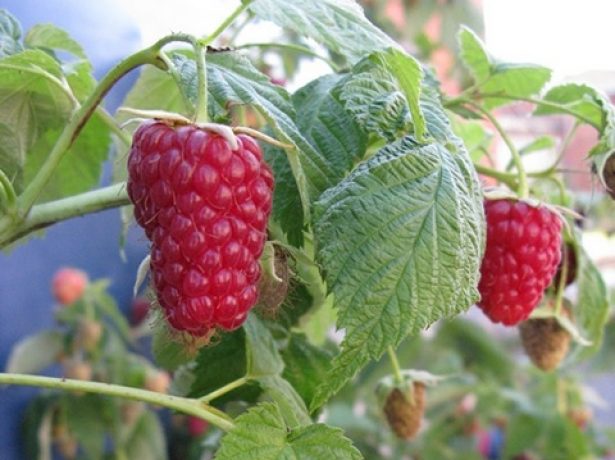
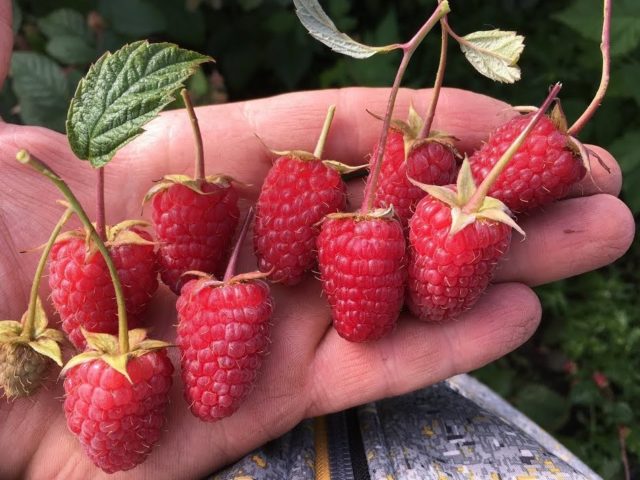
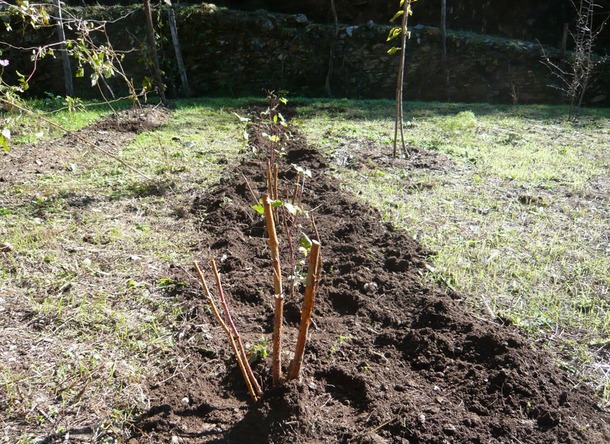
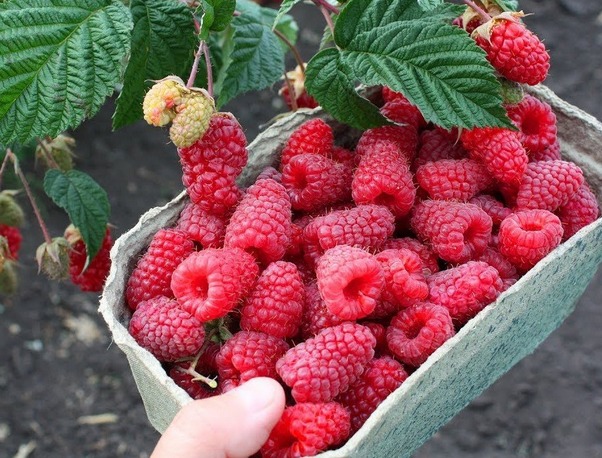


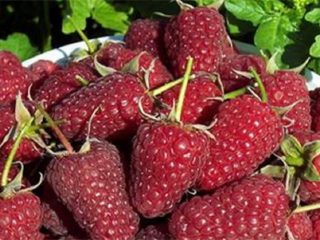
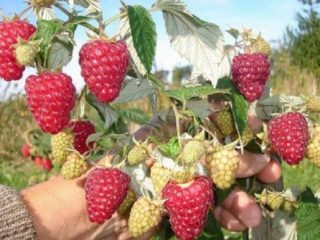
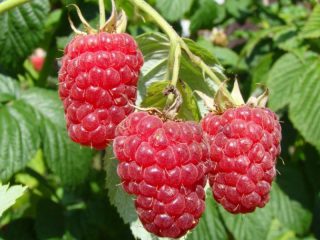
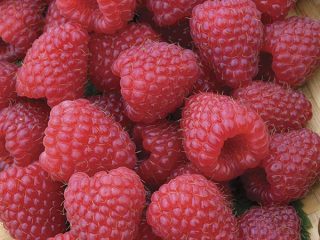
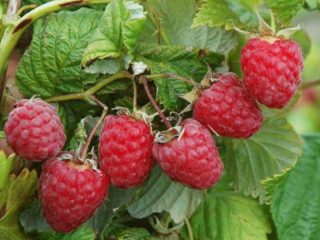
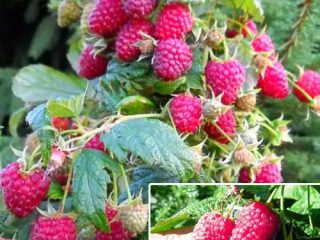

Gjcflbkd
I PLANTED THIS YEAR, I ORDERED THROUGH THE GARDENS OF THE URAL, CONSIDERING THE FACT THAT I GROWED IN A GREENHOUSE SINCE APRIL AND PLANTED IN JUNE IN THE OPEN GROUND - UNTIL SEPTEMBER 10 SEVERAL BERRIES HAVE RIPPENED, ALTHOUGH THERE ARE A LOT OF BERRIES, THE YEAR IS LARGE, BUT NOT VERY MUCH RUPE, HARD DRUPE , I WILL LOOK AT NEXT YEAR, AND SO IT IS A CANDIDATE FOR DISPOSAL.